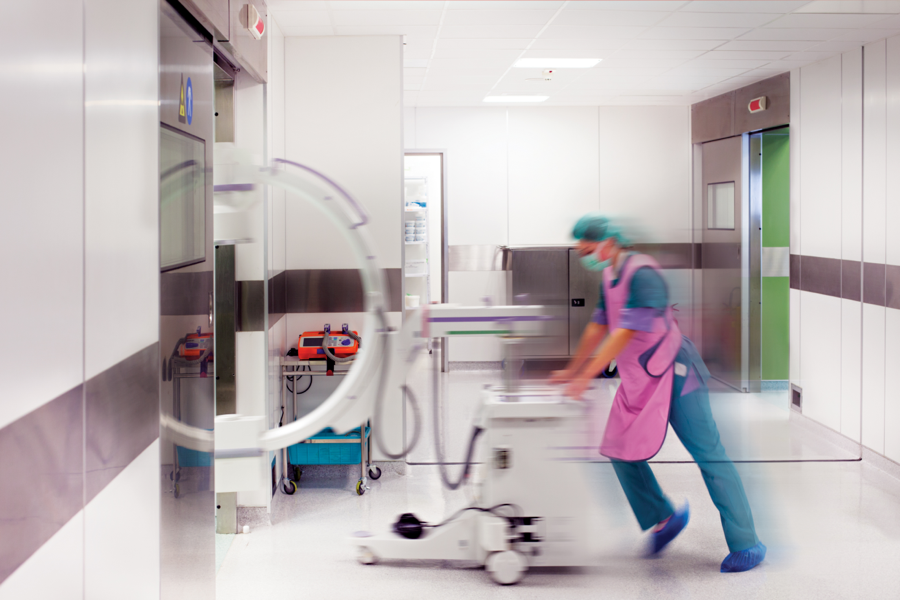
CAREER PATHS
The Role and Scope of Practice of the Nurse Practitioner
-
 EveryNurse Staff
EveryNurse Staff
- Last Updated: 09/17/2021

Did you know Americans make more than 1.06 billion visits to nurse practitioners each year? As of May 2021, more than 325,000 nurse practitioners (NPs) are licensed in the United States. They work in various healthcare settings, care for people of all ages, and work towards the common goal of improving the health and well-being of their patients and their communities. The number of practicing NPs has grown over the last several years and is projected to continue to grow, which will assist with the physician shortage, specifically in primary care.
NPs are the providers of choice for millions of patients. Current provider shortages, especially in primary care, are a growing concern, yet the growth of the NP role is addressing that concern head-on. The faith patients have in NP-provided health care is evidenced by the estimated 1.06 billion patient visits made to NPs in 2018.
Joyce Knestrick, AANP President
Role of the Nurse Practitioner
The Nurse Practitioner (NP) is a vital component in delivering healthcare to people across their lifespan. Millions of people visit NPs annually in both the inpatient and outpatient settings. Their unique characteristic of approaching the patient as a whole and focusing on the health and well-being of the entire patient may be a contributing factor.
The role of the NP includes evaluating, diagnosing, and treating the patient along with delivering education and counseling to their patients to help guide them on a healthier path. The assessment, diagnosis, and treatment are completed by a thorough assessment, ordering diagnostic tests including laboratory and radiologic tests, interpreting the tests, and diagnosing the patient. The NP then initiates treatment through non-pharmacological or pharmacologic measures or consults with another provider or specialty to ensure the patient receives the necessary care. The NP advocates for interprofessional care, which includes consulting physical therapy, occupational therapy, palliative care, or other services as needed to meet the patient’s healthcare needs.
Scope of Practice
Scope of practice describes the “who,” “what,” “where,” “when,” “why,” and “how” of the NP practice. It defines what the healthcare provider can legally do while working within their professional license and state laws and guidelines.
The NP is an advocate for the patient. Their scope of practice allows them to practice autonomously in the delivery of care to the patient. The NP can assess, diagnose and treat the patient, either independently or in coordination with other healthcare providers. The assessment, diagnosis, and treatment is completed by ordering and interpreting diagnostic tests, diagnosing a patient, and initiating treatment, including pharmacologic and non-pharmacologic options. The NP manages acute, chronic, and complex health problems. They also focus on health promotion and disease prevention through education and follow-up with patients and families as needed.
The role of the NP coincides with the advanced practice registered nurse (APRN) consensus model. This model applies to all APRNs, including NPs, certified registered nurse anesthetists (CRNAs), certified nurse midwives, and clinical nurse specialists. The purpose of the APRN consensus model is to provide guidance and uniformity in the regulation of the APRN roles, licensure, accreditation, certification, and education. The uniformity created between the states allows APRNs to practice to the full extent of their education and license and make it easier to practice across state lines due to the practice environment being equivocal.
As of August 2021, the scope of practice for the NP does vary state from state. However, the educational requirements, including completing the board certification exam, prepare an NP to practice independently, also known as full practice authority.
State Practice Environment
All of the states have not accepted the APRN consensus model. There are still limitations and restrictions in over 25 states. These states still have laws and regulations limiting the APRN, including the NP, to practice to their full extent. Therefore, while the NP is prepared academically and through the board certification exam to practice autonomously, the NP needs to clearly understand the practice environment in the state where they practice as there may be limitations and restrictions in place.
The AANP defines the three categories of the NP practice environment along with a map indicating the practice environment for each state. Below, you will see the status of the 50 states and DC as of August 2021.
- Full Practice– 25 states (including DC)
- Reduced Practice–15 states
- Restricted Practice–11 states
Full Practice
Full practice allows the NP to practice independently under their state license. They can evaluate, diagnose and treat the patient, including prescribing controlled substances if indicated without having a lifelong collaborative agreement with another healthcare provider.
Reduced Practice
Reduced practice state practice and licensure laws require the NP to have a career-long regulated collaborative agreement with a healthcare provider to deliver patient care. It may also limit the setting of one or more elements of NP practice. Reduced practice also reduces the ability for the NP to engage in at least one aspect of the NP practice.
Restricted Practice
Restricted practice requires the NP to have career-long supervision, delegation, or team management by another health provider. The state licensure laws also restrict the NP from engaging in at least one element of the NP practice.
For specific information about the practice environment in the state you practice in, visit your state board of nursing.
"By offering high-quality, cost-effective, patient-centered health care, NPs provide more than 325,000 solutions to the primary care shortage facing America today."
NPs are an essential component in meeting the healthcare needs of patients. They strive to deliver comprehensive and safe care to better the health and well-being of their patients. However, many states still have restrictions or barriers that make it problematic for the NP to practice to their full scope of practice. Therefore, I ask one thing from you. If you are a practicing NP in a state with reduced or restricted practice, reach out to your state board of nursing, state NP association (if available), or the AANP to find out how you can be a voice for your fellow NPs to obtain full practice authority.






















